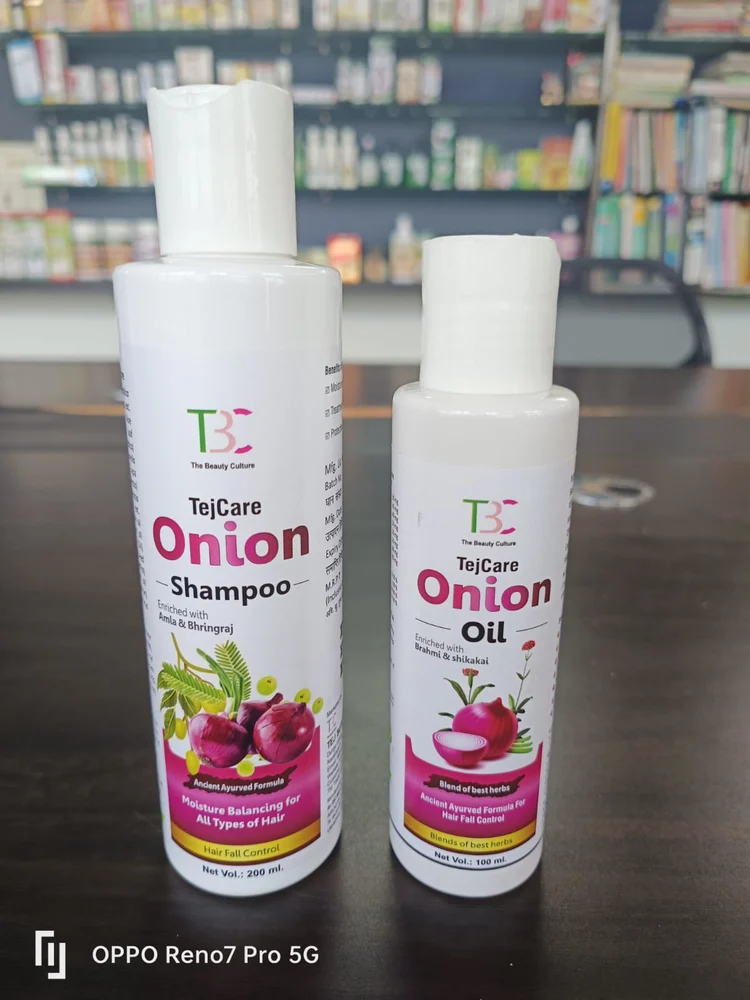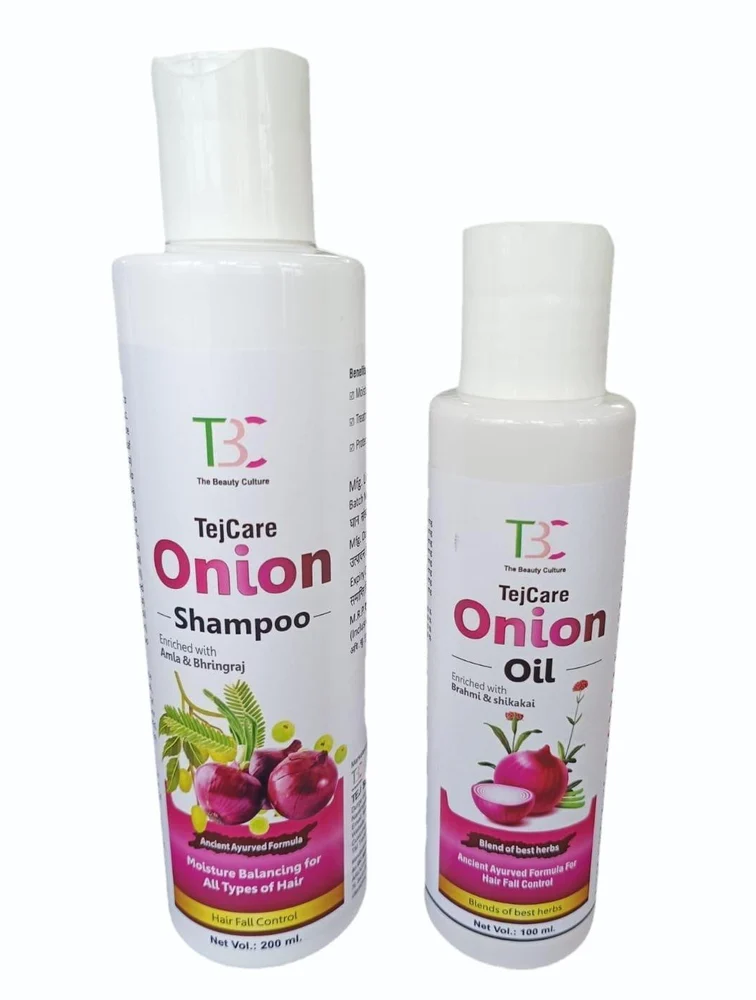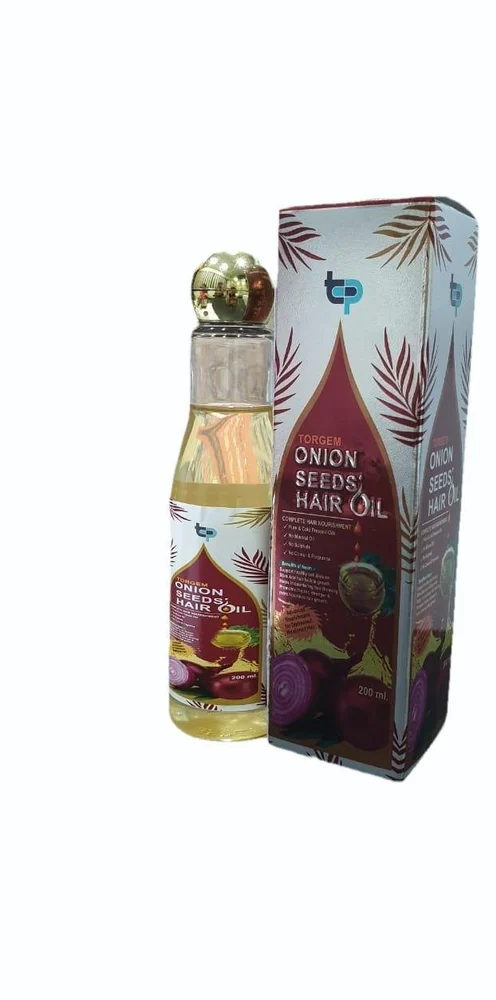Ayurvedic Onion Hair Oil Sampoo Combo
₹99.0
| Hair Oil Type |
Hair Fall Control
|
| Packaging Type |
Bottle
|
| Brand |
TBC
|
| Shelf Life |
12 months
|
| Item Name |
Techcare
|
| Combo Contain |
200ml Sampoo And 100ml Oil
|
| Availability |
In Stock
|
| Hair Oil Type |
Hair Fall Control
|
| Packaging Type |
Bottle
|
| Brand |
TBC
|
| Shelf Life |
12 months
|
| Item Name |
Techcare
|
| Combo Contain |
200ml Sampoo And 100ml Oil
|
| Availability |
In Stock
|
Enriched with Amla & Bhringraj
Ancient Ayurveda Formula
Moisture for Balancing All Types of Hair
Enriched with with Brahmi e shikakai
Ancient Ayurveda Formula for hair fall control
Blend of best herbs
You must be logged in to post a review.
Q & A
Scientific sustainability report — Ayurvedic Onion Hair Oil + Shampoo Combo (retail kit)
Functional unit: one combo = 100 mL Ayurvedic Onion Hair Oil (amber glass, 100 mL) + 200 mL shampoo (PET bottle, 200 mL).
Scope: cradle → regional warehouse (raw materials, packaging, manufacturing energy, road freight). Small, conservative screening LCA.
Single KPI (headline)
Estimated GHG footprint ≈ 0.87 kg CO₂-eq per combo (one 100 mL oil + one 200 mL shampoo).
Key assumptions (explicit & conservative — change any and result scales linearly)
-
Oil: 100 mL, density 0.92 g/mL → 0.092 kg oil.
-
Oil packaging: amber glass bottle 100 g (0.100 kg).
-
Oil upstream (refined plant oil / infused oil proxy): 3.81 kg CO₂e / kg oil.
-
Shampoo: 200 mL, density 1.02 g/mL → 0.204 kg shampoo.
-
Shampoo ingredients (formulation upstream): 1.50 kg CO₂e / kg shampoo (conservative assumption for rinse-off personal-care formulations).
-
Shampoo packaging: PET bottle 25 g (0.025 kg); virgin PET ≈ 2.15 kg CO₂e/kg.
-
Manufacturing energy: oil 0.05 kWh / bottle, shampoo 0.08 kWh / bottle.
-
Grid electricity emission factor (India): 0.727 kg CO₂e / kWh.
-
Distribution: 200 km by road truck, freight factor 0.069 kg CO₂e / tonne-km.
(All assumptions are intentionally conservative for screening; replace with site data for precision.)
Short, stepwise calculation (reproducible)
A. Oil (100 mL, 0.092 kg)
-
Raw oil: 0.092 kg × 3.81 = 0.3505 kg CO₂e
-
Glass bottle: 0.100 kg × 0.60 = 0.0600 kg CO₂e
-
Manufacturing electricity: 0.05 kWh × 0.727 = 0.0364 kg CO₂e
-
Transport (200 km): 200 km × (0.192 kg ÷ 1000) t × 0.069 = 0.00265 kg CO₂e
Oil total = 0.4495 kg CO₂e
B. Shampoo (200 mL, 0.204 kg)
-
Ingredients: 0.204 kg × 1.50 = 0.3060 kg CO₂e
-
PET bottle: 0.025 kg × 2.15 = 0.0538 kg CO₂e
-
Manufacturing electricity: 0.08 kWh × 0.727 = 0.0582 kg CO₂e
-
Transport (200 km): 200 km × (0.229 kg ÷ 1000) t × 0.069 = 0.00316 kg CO₂e
Shampoo total = 0.4211 kg CO₂e
C. Combo total
0.4495 + 0.4211 = 0.8706 kg CO₂e ≈ 0.87 kg CO₂e per combo
Quick interpretation (one-liners)
-
Ingredients (oil + shampoo formulation) dominate (~75–80%) of the combo’s footprint under these assumptions; packaging and manufacturing energy are secondary.
-
Transport (short regional trucking) is negligible here but would grow with long-distance or air freight.
-
Use-phase (hot water for shampoo rinsing) can be large for shampoo products in other LCAs — we excluded consumer-use energy in this screening; include it if you want full life-cycle.
High-impact improvement opportunities (prioritized)
-
Lower ingredient footprint: source cold-pressed/local amla/onion concentrates produced with agroecological practices or higher-yield extraction to cut the dominant ingredient term.
-
Switch packaging: use recycled glass (cullet) for oil and rPET or flexible refill pouches for shampoo to reduce packaging emissions.
-
Reduce manufacturing energy / buy RE: energy-efficiency in heating/filling and onsite renewable electricity reduce the electricity term.
-
Refill / concentrate models: selling shampoo as refill pouches or concentrated format reduces per-use packaging and transport impacts heavily.
Short recommended KPI to track monthly
-
kg CO₂e per combo (measured): measure kWh per batch, actual bottle masses (g), supplier ingredient LCA numbers, and average transport km — then re-run the calculation.
References (sources used for emission factors and method guidance)
-
Indian grid weighted-average emission factor — 0.727 kg CO₂e/kWh (COA / Climatiq dataset). Climatiq
-
Median life-cycle GHG for refined vegetable oils — ~3.81 kg CO₂e/kg (food-oil LCA literature). ScienceDirect
-
Container-glass LCA and India-specific glass life-cycle guidance. AIGMF+1
-
Virgin PET LCA (recent literature reporting ~2.15 kg CO₂e/kg vPET). ScienceDirect+1
-
Freight / transport emission methodology and factors (TERI / India freight docs). Teri+1
-
Shampoo LCA studies & method notes (use-phase importance and product LCA guidance). MDPI+1
General Inquiries
There are no inquiries yet.





Reviews
There are no reviews yet.